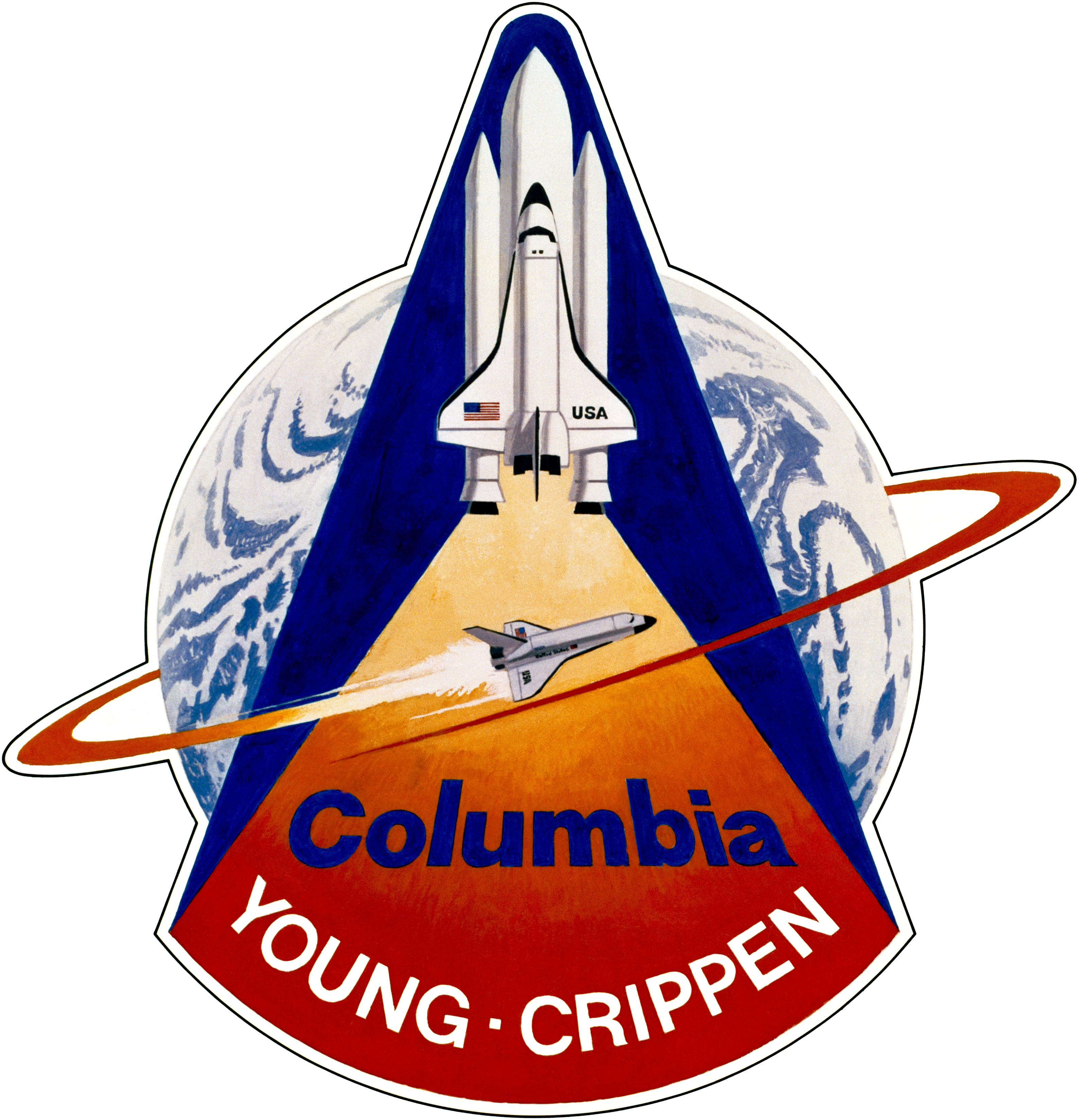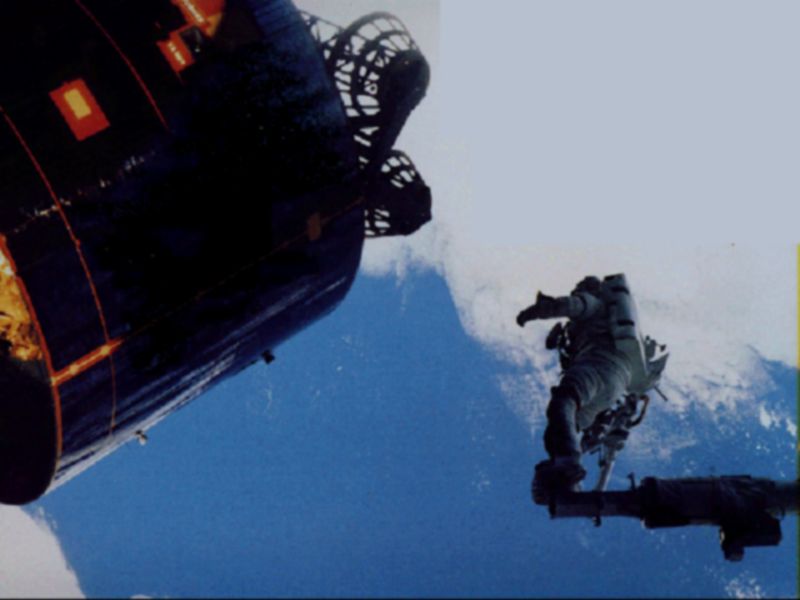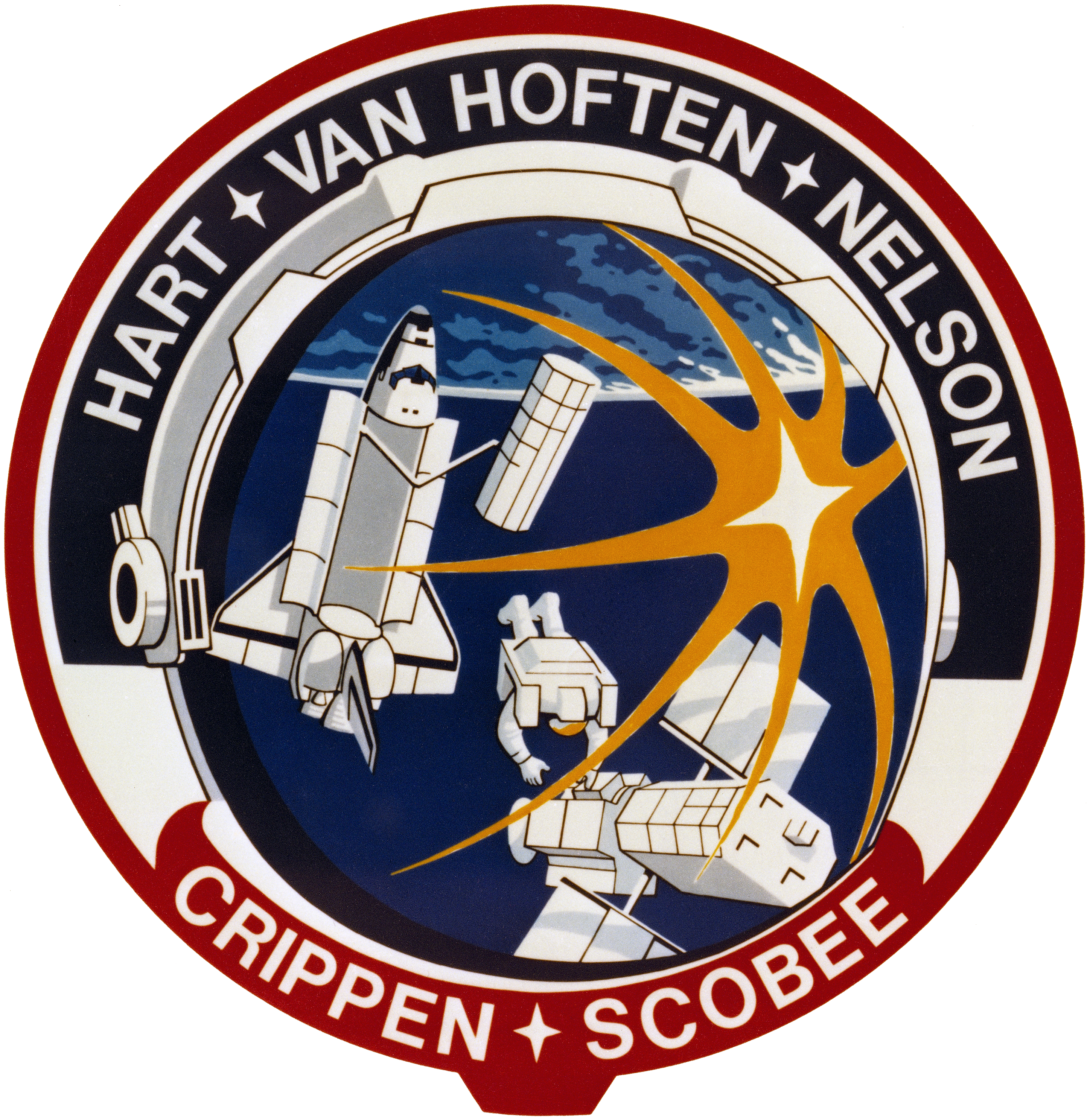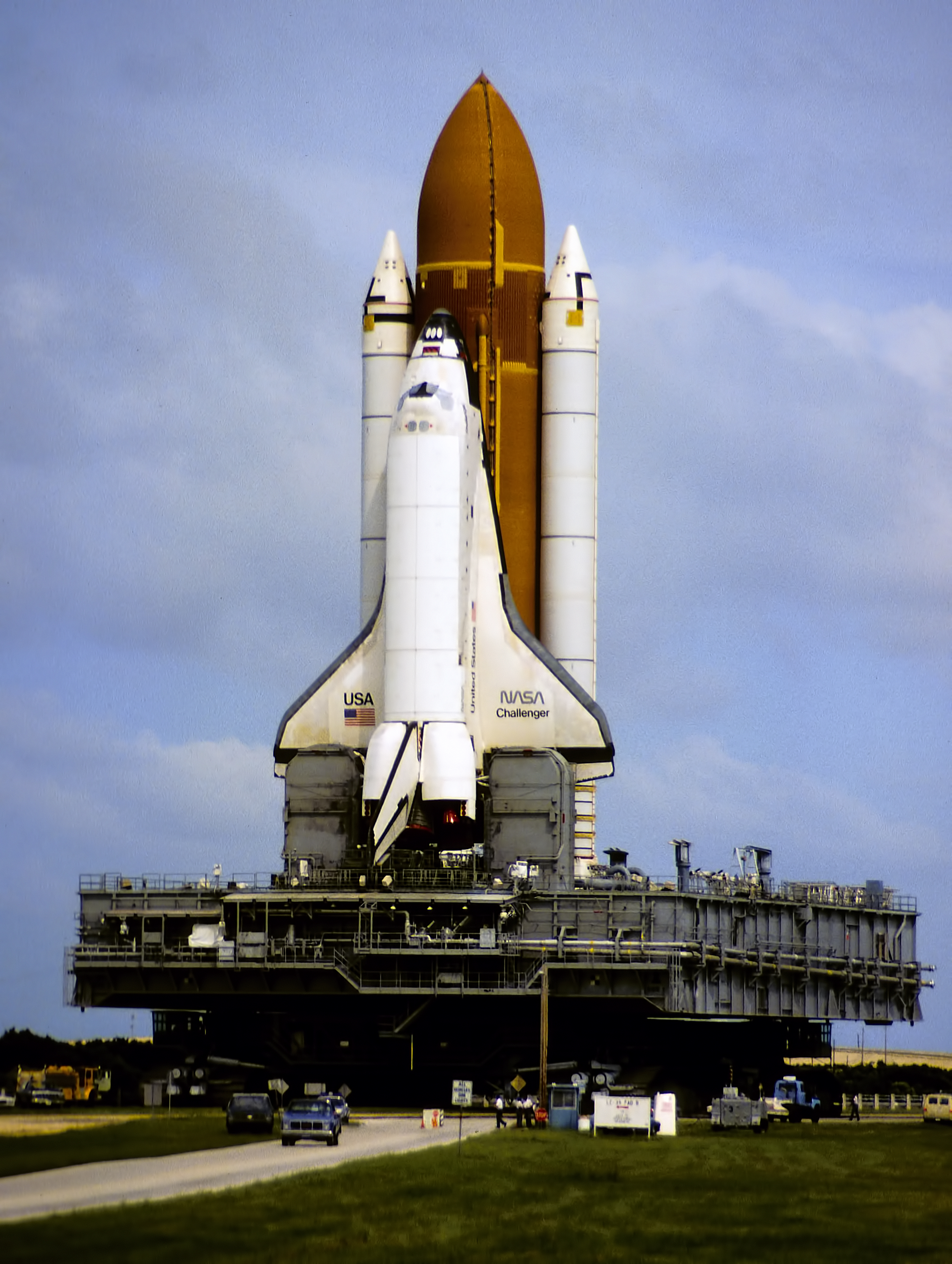|
STS-41-C
STS-41-C (formerly STS-13) was NASA's eleventh Space Shuttle mission, and the fifth mission of Space Shuttle ''Challenger''. The launch, which took place on April 6, 1984, marked the first direct ascent trajectory for a Space Shuttle mission. During the mission, ''Challenger''s crew captured and repaired the malfunctioning Solar Maximum Mission ("Solar Max") satellite, and deployed the Long Duration Exposure Facility (LDEF) experimental apparatus. STS-41-C was extended one day due to problems capturing the Solar Max satellite, and the landing on April 13, 1984, took place at Edwards Air Force Base, instead of at Kennedy Space Center as had been planned. The flight was originally numbered STS-13.James D. A. van Hoften NASA Johnson Space Center Oral History Project. December 5, 2007, Retri ... [...More Info...] [...Related Items...] OR: [Wikipedia] [Google] [Baidu] |
Terry Hart
Terry Jonathan "T.J." Hart (born October 27, 1946) is an American mechanical and electrical engineer, a retired United States Air Force lieutenant colonel and pilot, and former NASA astronaut. Education Hart was born on October 27, 1946, in Pittsburgh, Pennsylvania. He graduated from Mt. Lebanon High School in Mt. Lebanon, Pennsylvania, in 1964. He received a Bachelor of Science degree in mechanical engineering from Lehigh University in 1968, a Master of Science degree in mechanical engineering from the Massachusetts Institute of Technology in 1969, and a Master of Science degree in electrical engineering from Rutgers University in 1978. He was awarded an honorary doctorate of engineering from Lehigh University in 1988. Organizations He is a member of the Institute of Electrical and Electronics Engineers, Tau Beta Pi, Sigma Xi, and Delta Upsilon. Awards and citations * National Defense Service Medal * NASA Space Flight Medal * Outstanding Officer of Undergraduate Pilot Train ... [...More Info...] [...Related Items...] OR: [Wikipedia] [Google] [Baidu] |
George Nelson (astronaut)
George Driver "Pinky" Nelson (born July 13, 1950) is an American physicist, astronomer, science educator, and retired NASA astronaut. Early life and education Nelson was born on July 13, 1950, in Charles City, Iowa, but considers Willmar, Minnesota, to be his hometown. He graduated from Willmar Senior High School, Willmar, Minnesota, in 1968. He received a Bachelor of Science degree in Physics from Harvey Mudd College in 1972, and a Master of Science and a Doctor of Philosophy degrees in Astronomy from the University of Washington in 1974 and 1978, respectively. Nelson was a Boy Scout and earned the rank of First Class Scout. His wife, Susie, is from Alhambra, California. They have two daughters, Aimee Tess (born April 25, 1972) and Marti Ann (born February 27, 1975). Pinky enjoys playing golf, reading, swimming, running, and music. Research Nelson performed astronomical research at the Sacramento Peak Solar Observatory, Sunspot, New Mexico; the Astronomical Institute at ... [...More Info...] [...Related Items...] OR: [Wikipedia] [Google] [Baidu] |
Robert Crippen
Robert Laurel Crippen (born September 11, 1937) is an American retired naval officer and aviator, test pilot A test pilot is an aircraft pilot with additional training to fly and evaluate experimental, newly produced and modified aircraft with specific maneuvers, known as flight test techniques.Stinton, Darrol. ''Flying Qualities and Flight Testing ..., aerospace engineering, aerospace engineer, and retired astronaut. He traveled into space four times: as Pilot of STS-1 in April 1981, the first Space Shuttle mission; and as Commander of STS-7 in June 1983, STS-41-C in April 1984, and STS-41-G in October 1984. He was also a part of the Manned Orbiting Laboratory (MOL), Skylab Medical Experiment Altitude Test (SMEAT), Apollo–Soyuz, ASTP support crew member, and the Approach and Landing Tests (ALT) for the Space Shuttle. In 1986, Crippen participated in the recovery operations for the remains of crew members after the Space Shuttle Challenger disaster, Space Shuttle ''Cha ... [...More Info...] [...Related Items...] OR: [Wikipedia] [Google] [Baidu] |
James Van Hoften
James Dougal Adrianus "Ox" van Hoften (born June 11, 1944 ) is an American civil and hydraulic engineer, retired U.S. Navy officer and aviator, and a former astronaut for NASA. Personal data Van Hoften was born June 11, 1944, in Fresno, California. He was active in the Boy Scouts of America where he achieved its second-highest rank, Life Scout. He considers Burlingame, California, to be his hometown. He is of Dutch descent. Van Hoften is married to the former Vallarie Davis of Pasadena, with three children: Jennifer Lyn (born October 31, 1971), Jamie Juliana (born August 24, 1977), and Victoria Jane (born March 17, 1981). He enjoys skiing, playing handball and racquetball, and jogging. In college, he was a member of the Alpha Sigma chapter of Pi Kappa Alpha. Education Graduated from Mills High School, Millbrae, California, in 1962; received a Bachelor of Science degree in Civil Engineering from the University of California, Berkeley in 1966; a Master of Science and a Doctor of ... [...More Info...] [...Related Items...] OR: [Wikipedia] [Google] [Baidu] |
Solar Maximum Mission
The Solar Maximum Mission satellite (or SolarMax) was designed to investigate Sun, Solar phenomena, particularly solar flares. It was launched on February 14, 1980. The SMM was the first satellite based on the Multimission Modular Spacecraft bus manufactured by Fairchild Industries, a platform which was later used for Landsat 4, Landsats 4 and Landsat 5, 5 as well as the Upper Atmosphere Research Satellite. After an attitude control failure in Nov 1980 it was put in standby mode until April 1984 when it was repaired by a Shuttle mission. The Solar Maximum Mission ended on December 2, 1989, when the spacecraft Atmospheric reentry, re-entered the atmosphere and burned up over the Indian Ocean. Instruments Failure and repair The white-light coronagraph/polarimeter (C/P) took coronal images for about six months from March 1980 before suffering an electronics failure in September that prevented operation. In November 1980, the second of four fuses in SMM's attitude control system ... [...More Info...] [...Related Items...] OR: [Wikipedia] [Google] [Baidu] |
Dick Scobee
Francis Richard Scobee (May 19, 1939 – January 28, 1986) was an American pilot, engineer, and astronaut. He was killed while he was commanding the Space Shuttle ''Challenger'' in 1986, which suffered catastrophic booster failure during launch of the STS-51-L mission. He held a Bachelor of Science degree in Aerospace Engineering, graduating from the University of Arizona in 1965. He was a reciprocating engine mechanic for the United States Air Force and served as a combat aviator in the Vietnam War. Selected for NASA Astronaut Corps in January 1978, Scobee completed his training in August 1979. While awaiting his first orbital spaceflight mission, he served as an instructor pilot for the Shuttle's 747 carrier aircraft. In April 1984, he piloted ''Challenger'' mission STS-41-C, which successfully deployed one satellite and repaired another. Early life Scobee was born May 19, 1939, in Cle Elum, Washington, to Francis William Scobee and Edlynn (Miller) Scobee, he attend ... [...More Info...] [...Related Items...] OR: [Wikipedia] [Google] [Baidu] |
Space Shuttle Challenger
Space Shuttle ''Challenger'' (OV-099) was a Space Shuttle orbiter manufactured by Rockwell International and operated by NASA. Named after the commanding ship of a nineteenth-century scientific expedition that traveled the world, ''Challenger'' was the second Space Shuttle orbiter to fly into space after '' Columbia'', and launched on its maiden flight in April 1983. It was destroyed in January 1986 soon after launch in an accident that killed all seven crewmembers aboard. Initially manufactured as a test article not intended for spaceflight, it was utilized for ground testing of the Space Shuttle orbiter's structural design. However, after NASA found that their original plan to upgrade ''Enterprise'' for spaceflight would be more expensive than upgrading ''Challenger'', the orbiter was pressed into operational service in the Space Shuttle program. Lessons learned from the first orbital flights of ''Columbia'' led to ''Challenger''s design possessing fewer thermal protectio ... [...More Info...] [...Related Items...] OR: [Wikipedia] [Google] [Baidu] |
STS-41-B
STS-41-B was the tenth NASA Space Shuttle mission and the fourth flight of the . It launched on 3 February 1984, and landed on 11 February 1984 after deploying two communications satellites. It was also notable for including the first untethered spacewalk. Following STS-9, the flight numbering system for the Space Shuttle program was changed. Thus, the next flight, instead of being designated STS-10, became STS-41-B; the original successor to STS-9, STS-10, was canceled due to payload delays. Crew Spacewalks ;EVA 1 * Personnel: McCandless and Stewart * Date: 7 February 1984 * Duration: 5 hours, 55 minutes ;EVA 2 * Personnel: McCandless and Stewart * Date: 9 February 1984 * Duration: 6 hours, 17 minutes Crew seating arrangements Mission summary ''Challenger'' lifted off from Kennedy Space Center at 08:00:00 a.m. EST on 3 February 1984. It was estimated that 100,000 people attended the launch. Two communications satellites were deployed about 8 hours afte ... [...More Info...] [...Related Items...] OR: [Wikipedia] [Google] [Baidu] |
Long Duration Exposure Facility
NASA's Long Duration Exposure Facility, or LDEF (pronounced "eldef"), was a school bus-sized cylindrical facility designed to provide long-term experimental data on the outer space environment and its effects on space systems, materials, operations and selected spores' survival. It was placed in low Earth orbit by in April 1984. The original plan called for the LDEF to be retrieved in March 1985, but after a series of delays it was eventually returned to Earth by in January 1990. It successfully carried science and technology experiments for about 5.7 years that have revealed a broad and detailed collection of space environmental data. LDEF's 69 months in space provided scientific data on the long-term effects of space exposure on materials, components and systems that has benefited NASA spacecraft designers to this day. History Researchers identified the potential of the planned Space Shuttle to deliver a payload to space, leave it there for a long-term exposure to the harsh o ... [...More Info...] [...Related Items...] OR: [Wikipedia] [Google] [Baidu] |
STS-41-D
STS-41-D (formerly STS-14) was the 12th flight of NASA's Space Shuttle program, and the first mission of Space Shuttle ''Discovery''. It was launched from Kennedy Space Center, Florida, on August 30, 1984, and landed at Edwards Air Force Base, California, on September 5, 1984. Three commercial communications satellites were deployed into orbit during the six-day mission, and a number of scientific experiments were conducted, including a prototype extendable solar array that would eventually form the basis of the main solar arrays on the International Space Station (ISS). The mission was delayed by more than two months from its original planned launch date, having experienced the Space Shuttle program's first launch abort at T-6 seconds on June 26, 1984. Crew Crew seat assignments Mission background The launch was originally planned for June 25, 1984, but because of a variety of technical problems, including rollback to the Vehicle Assembly Building (VAB) to replace ... [...More Info...] [...Related Items...] OR: [Wikipedia] [Google] [Baidu] |
Space Transportation System
The Space Transportation System (STS), also known internally to NASA as the Integrated Program Plan (IPP), was a proposed system of reusable crewed space vehicles envisioned in 1969 to support extended operations beyond the Apollo program. (NASA appropriated the name for its Space Shuttle Program, the only component of the proposal to survive Congressional funding approval). The purpose of the system was two-fold: to reduce the cost of spaceflight by replacing the current method of launching capsules on expendable rockets with reusable spacecraft; and to support ambitious follow-on programs including permanent orbiting space stations around Earth and the Moon, and a human landing mission to Mars. In February 1969, President Richard Nixon appointed a Space Task Group headed by Vice President Spiro Agnew to recommend human space projects beyond Apollo. The group responded in September with the outline of the STS, and three different program levels of effort culminating with a ... [...More Info...] [...Related Items...] OR: [Wikipedia] [Google] [Baidu] |
Eastern Time Zone
The Eastern Time Zone (ET) is a time zone encompassing part or all of 23 states in the eastern part of the United States, parts of eastern Canada, the state of Quintana Roo in Mexico, Panama, Colombia, mainland Ecuador, Peru, and a small portion of westernmost Brazil in South America, along with certain Caribbean and Atlantic islands. Places that use: * Eastern Standard Time (EST), when observing standard time (autumn/winter), are five hours behind Coordinated Universal Time ( UTC−05:00). * Eastern Daylight Time (EDT), when observing daylight saving time (spring/summer), are four hours behind Coordinated Universal Time ( UTC−04:00). On the second Sunday in March, at 2:00 a.m. EST, clocks are advanced to 3:00 a.m. EDT leaving a one-hour "gap". On the first Sunday in November, at 2:00 a.m. EDT, clocks are moved back to 1:00 a.m. EST, thus "duplicating" one hour. Southern parts of the zone (Panama and the Caribbean) do not observe daylight saving time ... [...More Info...] [...Related Items...] OR: [Wikipedia] [Google] [Baidu] |





.jpg)

.jpg)